
views
Holding the Flute

Check that the bird is in place. The bird, or block, is the wooden piece sitting on the bridge of the flute, often bound with a leather string. Unbind the string and adjust the bird until it’s lined up right behind the sound hole, the second hole in the channel that holds the bird. The edge of the bird should just barely touch the sound hole. Tie the leather string around it so it fits snugly against the flute.
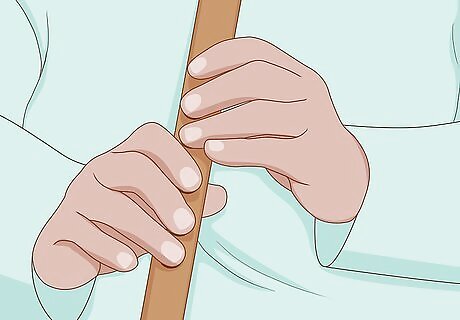
Hold the flute comfortably with both hands. Your thumbs should be under the body of the flute, with the line of holes facing forward. Some musicians hold the flute straight out horizontally and some play with it pointed straight down. Try both and tilt the flute’s angle until you find a position that that feels most comfortable. The larger and heavier your flute is, the more vertical you’ll want to hold it. Changing the angle will help reduce the strain on your muscles.
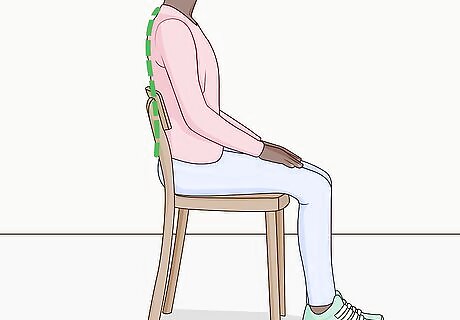
Sit or stand with your back comfortably straight. Keep your back straight so your diaphragm is open and free. This will help you control your breathing while playing. You shouldn’t force it, though—stay comfortable and relax into the straight posture. Keep your arms, shoulders, and neck natural and relaxed.
Playing Your First Note
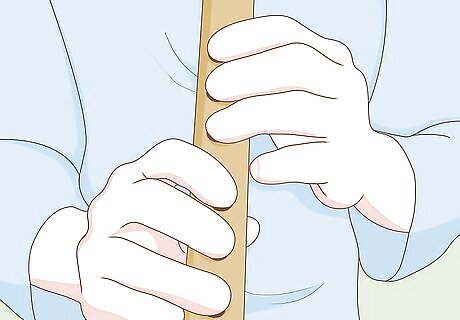
Practice placing your fingers over the holes. Use whichever hand feels most comfortable (usually, this is the right hand) to cover the first three holes and your other hand to cover the bottom three holes. Make sure to use the pads of your fingers, not your fingertips. This will help seal off the hole and produce a cleaner note. If your finger doesn’t completely seal the hole while you play, it will make an ugly screeching sound. If this keeps happening, practice your finger placement.
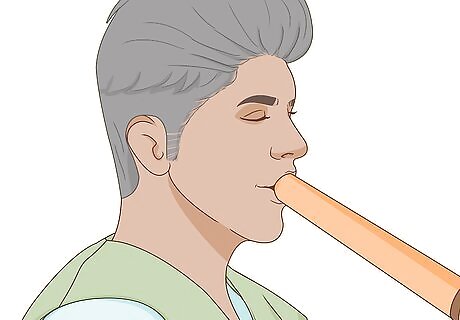
Place your mouth around the mouthpiece. Pucker your lips, then place the mouthpiece under your top lip and on top of your bottom lip. Add a bit of pressure to seal your lips around the flute. Your top lip should partially seal the blowhole—also known as an “embouchure”—on the mouthpiece. The flute should not go inside your mouth, but simply rest on your lip. This will give you better control over your air flow and keep too much moisture from getting into the flute.
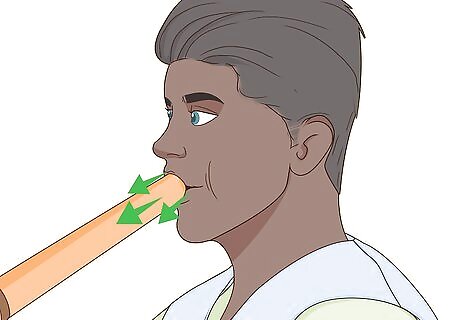
Blow air into the flute. Start gently, then add force to your breath. Listen to how the quality of the sound changes as your breathing changes from weak to strong. Play around with your breath until you produce a steady, clear sound. During this exercise, you may find it easiest to hold the flute without covering any of the holes so you can focus on your breath. Once you feel comfortable with the force your breath, try practicing it while playing different notes. Try not to “overblow,” or blow with so much force that the note jumps up to a higher pitch.
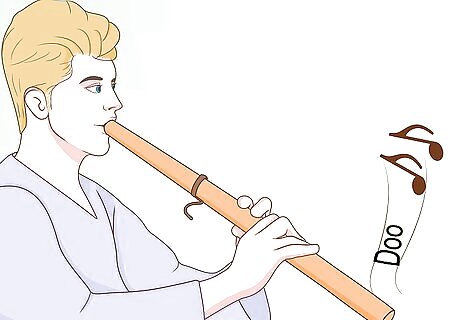
Practice the “tonguing” technique. Once you’ve mastered steady blowing, you’re ready to learn another basic technique. Blow into the flute once again, but this time make a soft “doo” sound as you blow. This should produce a slightly different sound and allow you to control the beginning and end of a note. Practice this until it feels comfortable. While practicing tonguing, you may want to hold the flute without covering any of the holes so you can focus on the tonguing technique. After you feel more comfortable with the new technique, try playing different notes while tonguing.

Learn the “double tonguing” technique. Just like tonguing, this technique is done with articulation, not fingering. Instead of the “doo” sound, you’ll say “ta kahhh” while playing a note. Practice saying it out loud several times, then try it with the flute.
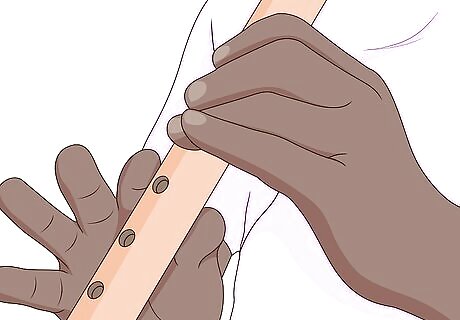
Learn an advanced technique such as note bending. Ornamentation is an important part of playing the American Indian flute—advanced techniques allow you to add personality and character to your music. To note bend, play a note with at least one finger hole covered. Slowly lift your finger up off of the hole to change the pitch. You can also roll or slide your finger up and down the body of the flute to bend the note.
Advancing to Scales and Melodies
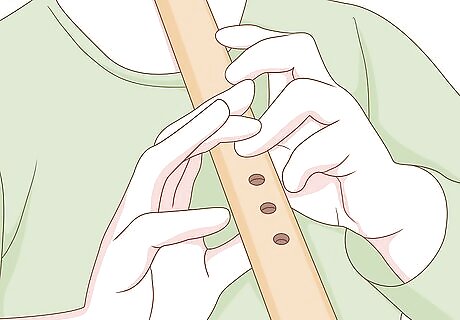
Master the minor pentatonic scale. Once you nail this basic scale, you’ll be able to start creating and learning simple melodies on the flute. Keep a finger over the third hole from the top throughout this entire scale. Start with all six holes covered, then one by one, lift your fingers off the holes from bottom to top. Practice this scale forwards and backwards until you can play it comfortably.
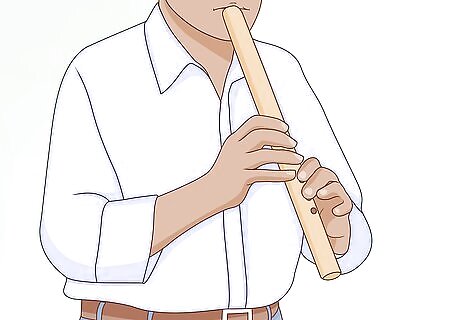
Learn the diatonic scale. This is the classic “do-re-mi” scale that includes eight different notes. You can find an easily readable chart for this scale on Flutecraft's website. Start with all holes covered except the very bottom one and move through the scale until you end on the last note with the third, fourth, and fifth hole covered. Practice the scale forwards, then backwards to really perfect it.
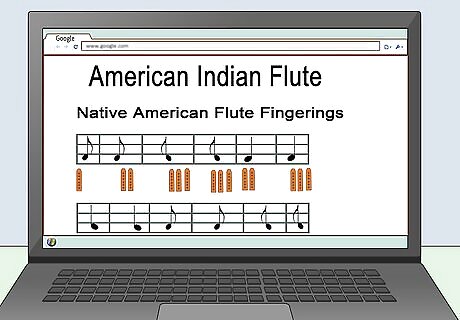
Use online charts to learn songs easily. Find a visual chart on a website such as Waking Spirit to get started, then follow the indicated finger placements. These charts are easily readable—no music-reading experience required. The chart will show you step-by-step which finger placements make up each note. Once you’ve gotten the hang of this, you can move on to learning tablature and sheet music.
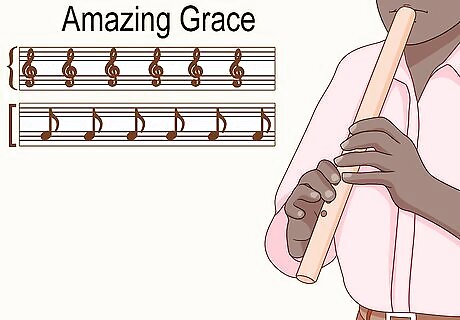
Learn a simple tune like “Amazing Grace.” A common mistake beginners make is trying to learn a complicated song too soon and getting frustrated. Start with something simple like the classic hymn “Amazing Grace” and master it before moving on to more advanced songs.

Create your own melody. Use the notes you learned in the minor pentatonic scale to create your own melody. Close your eyes and just play whatever note comes to you. This will exercise your creative abilities and help you practice fingering and breathing techniques.















Comments
0 comment